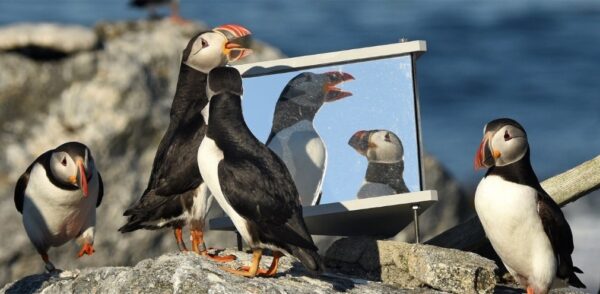In a new paper published in the Proceedings of the National Academy of Sciences, a team of researchers documented 851 seabird restoration events that took place over the last 70 years (although most took place during the previous 10 years). These projects spanned 551 locations and targeted 138 seabird species.
Forty-nine of these events used translocation, the process of moving seabirds from one place to another, while 802 used social attraction, which is the use of decoys, mirrors, bird sound recordings and other devices to lure birds to a new place. Fifty-two of these projects used translocation and social attraction in combination.
Atlantic Puffins gape at reflections on a mirror box in Maine. Image by Derrick Z. Jackson
Some of the world’s most threatened birds, including shearwaters, petrels and puffins, responded the most positively to restoration attempts, particularly social attraction. To read more click here
The study authors have also launched the Seabird Restoration Database, a website that provides information about every known seabird restoration project, noting successes and failures.
